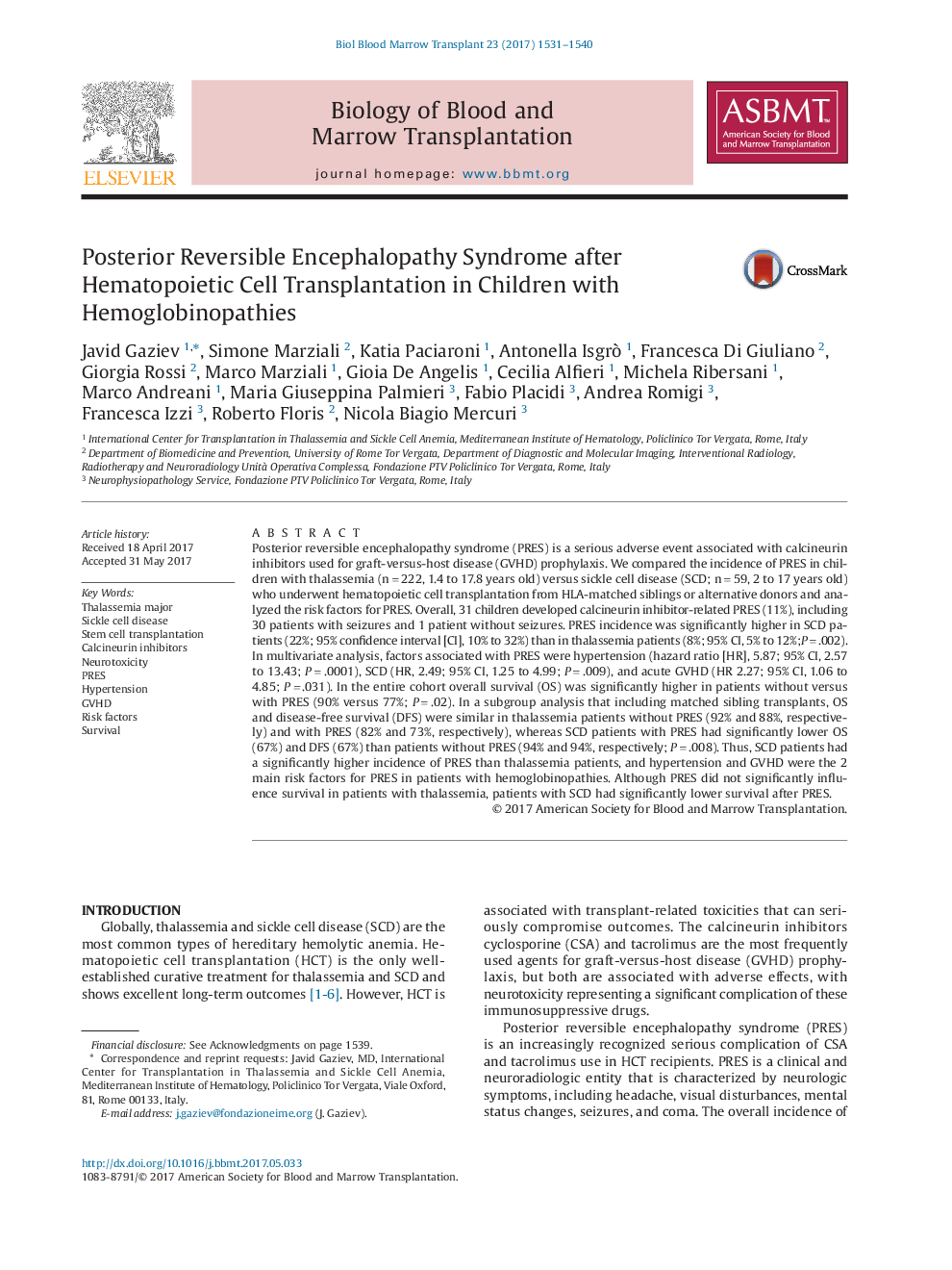| کد مقاله | کد نشریه | سال انتشار | مقاله انگلیسی | نسخه تمام متن |
|---|---|---|---|---|
| 5524387 | 1546237 | 2017 | 10 صفحه PDF | دانلود رایگان |
- PRES after HCT is more common in patients with sickle cell disease than in patients with thalassemia.
- Hypertension and acute GVHD are important risk factors for the development of PRES in hemoglobinopathies.
- PRES had more deleterious effects on survival of patients with SCD than of patients with thalassemia.
Posterior reversible encephalopathy syndrome (PRES) is a serious adverse event associated with calcineurin inhibitors used for graft-versus-host disease (GVHD) prophylaxis. We compared the incidence of PRES in children with thalassemia (nâ=â222, 1.4 to 17.8 years old) versus sickle cell disease (SCD; nâ=â59, 2 to 17 years old) who underwent hematopoietic cell transplantation from HLA-matched siblings or alternative donors and analyzed the risk factors for PRES. Overall, 31 children developed calcineurin inhibitor-related PRES (11%), including 30 patients with seizures and 1 patient without seizures. PRES incidence was significantly higher in SCD patients (22%; 95% confidence interval [CI], 10% to 32%) than in thalassemia patients (8%; 95% CI, 5% to 12%;Pâ=â.002). In multivariate analysis, factors associated with PRES were hypertension (hazard ratio [HR], 5.87; 95% CI, 2.57 to 13.43; Pâ=â.0001), SCD (HR, 2.49; 95% CI, 1.25 to 4.99; Pâ=â.009), and acute GVHD (HR 2.27; 95% CI, 1.06 to 4.85; Pâ=â.031). In the entire cohort overall survival (OS) was significantly higher in patients without versus with PRES (90% versus 77%; Pâ=â.02). In a subgroup analysis that including matched sibling transplants, OS and disease-free survival (DFS) were similar in thalassemia patients without PRES (92% and 88%, respectively) and with PRES (82% and 73%, respectively), whereas SCD patients with PRES had significantly lower OS (67%) and DFS (67%) than patients without PRES (94% and 94%, respectively; Pâ=â.008). Thus, SCD patients had a significantly higher incidence of PRES than thalassemia patients, and hypertension and GVHD were the 2 main risk factors for PRES in patients with hemoglobinopathies. Although PRES did not significantly influence survival in patients with thalassemia, patients with SCD had significantly lower survival after PRES.
Journal: Biology of Blood and Marrow Transplantation - Volume 23, Issue 9, September 2017, Pages 1531-1540
